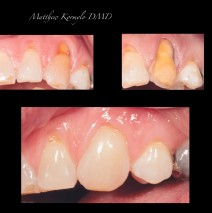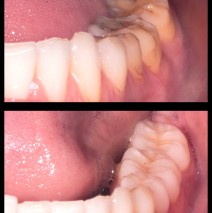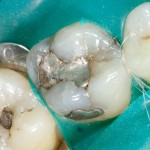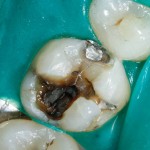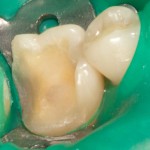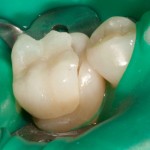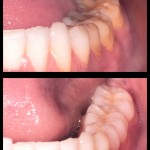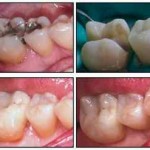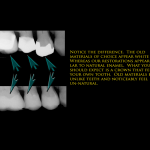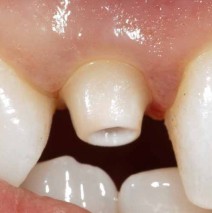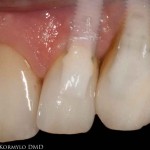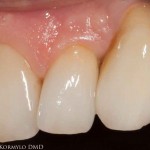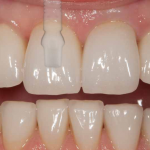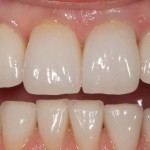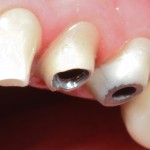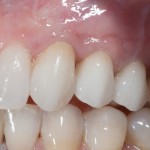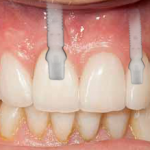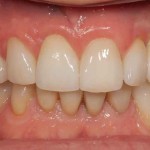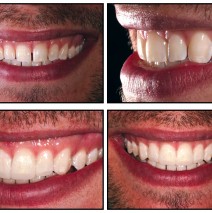What goes into designing a smile?
Individuality..
Elegant & Unique…
Read MorePatients simply find “natural” more appealing.
Tailoring our dentistry to harmonize with the individual’s facial characteristics and lip posture allows us to meet patients expectations, optimize esthetics while hiding evidence of treatment. Our best reference for developing a new smile for and individual is studying nature and identifying elements that make it appear attractive and appealing. A proper “smile design” should reflect the desirable appearance without negatively impacting the stable biological environment surrounding the teeth. What goes into a smile design will always heavily depend on what surrounds the smile and teeth considered for alteration.
Why is Dr. K not on our Preferred Provider list?
We believe dental insurance plans provide a tremendous service for those who need more routine care and maintenance. However, when treatment needs become well beyond what dental benefits typically allow, finding a sustainable solution involves using the best materials and technique. We simply believe patients should have the option to choose what is best for them without Insurance interfering. Contracted dentists in PPO networks are limited in many ways in choosing products used to restore teeth. Although the direct benefit to patients may be financial savings and convenience, every filling or crown procedure inherently involves removing more of your natural tooth. Our best materials and techniques will translate into less treatment over your lifetime if you are dedicated to maintainence.
We do however, like most dental offices, accept all forms of dental insurance plans and as a service to our patients file claims and follow them up. Please contact our front office for questions related to our dental insurance policy.
Read More
What problems are caused by teeth grinding?
Notice the deep dark colored neck area of the canine tooth below. Tooth colored filling material is often used in areas such as this to protect the vulnerable unprotected surface void of enamel. Little notches near the necks of teeth are very common and are not always associated with grinding habits. Often sensitive to cold and difficult to clean, these defects lead to gum recession as illustrated clearly here. Gum surgery has become a very predictable way to recover receding gums but in this case, surgery was not needed. The underlying cause of this defect is primarily excessive teeth grinding placing extreme lateral forces against the tooth. These forces can cause the tooth to flex – which stresses the bone and soft tissue supporting the tooth. 
What has been discovered in more recent literature, tooth flexure increases when enamel loss reaches moderate levels. Ceramic is in many ways very similar to enamel structurally and when used appropriately can reduce this flexure resolving problems arising peripheral problems. Notice the photo progression of treating this tooth using a ceramic veneer to cover the visible surface of the tooth. The tissue recovery here is a remarkable observation of what happens to tissue when flexure is reduced back to ideal levels. Surgery was completely avoidable here for this patient.
Read More
Why do I need cleanings and exam every 6 months?
Bi -annual cleaning appointments are driven primarily by what insurance companies allow. The primary benefit to you has less to do with the actual cleaning but mostly early diagnosis and prevention. What we are monitoring during your visit are possible changes or signs of pathology occurring around the soft tissue and bone that support your teeth. Measurements are taken every six months and if we are observing changes- treatment may be indicated to prevent further damage and costly treatment down the road.
The exam following the hygiene procedure allows the doctor to examine your teeth and tissue confirming any problem areas the hygienist observed and for small lesions that could be covered up by tarter or plaque.
You should know that maintaining stable oral health is primarily up to you. 90% of stability comes from what you do on a daily basis. Our hygienists are your most valuable resource in making certain you are making the most of the products used on a daily basis to brush and floss effectively. The more you understand about your own mouth will ultimately help you minimize how often we need to be involved. This is our goal….
Your hygiene appointment is your best chance of reducing costs in the dental office over your lifetime. Treating disease early substantially reduces the potential cost to recover.
For more information see The American Dental Association’s public resource page: Mouthhealthy.org.
What is the purpose of a night guard?
Teeth undergo stress from clenching, chewing and for 90% of the population night time grinding. Possibly the most under treated oral disease but one I have observed is a primary precursor for cavities, dental abscesses, cracked teeth, enamel wear, sensitive teeth, periodontal disease, TMJ abnormalities, recession and often chronic isolated gingivitis.
With age, teeth naturally undergo wear and erosion leading to enamel loss. One of the many benefits our natural enamel provide is resistance from bending forces.
 As the outer enamel layer thins, teeth become more flexible and stress cracks become more common from habitual stressor habits like grinding and clenching. In fact, pre mature enamel loss can begin early in life if these habitual activities, also known as para function, go untreated. The extend of dental treatment complications later in life may well be proportional to whether the patient was treated when signs of premature wear were identified.
As the outer enamel layer thins, teeth become more flexible and stress cracks become more common from habitual stressor habits like grinding and clenching. In fact, pre mature enamel loss can begin early in life if these habitual activities, also known as para function, go untreated. The extend of dental treatment complications later in life may well be proportional to whether the patient was treated when signs of premature wear were identified.
We believe optimal oral healthcare involves identifying the cause of existing disease in addition to the side effects of the disease. A night guard is worth its weight in gold in prevention when habitual “para functional” stressors are influential in reducing stability in one’s oral cavity.
We also believe it is our responsibility is to identify when a night guard is recommended and assure the fit is comfortable throughout the night. The patients responsibility to wear the appliance as recommended often determines whether or not we proceed with further treatment needs when these “para functional habits” are destructive.
Read More
Is this a mercury free practice?
Yes. We use primarily two materials to repair natural teeth. For fillings, we recommend tooth colored materials also known as “bonding” and or “Composite” This material is a resin based formula filled with microscopic glass filler particles for better durability. It hardens under ultraviolet light and is used to repair smaller areas of damage.
For larger areas, or crowned teeth in need of replacement, we recommend metal free ceramic to repair the tooth. Ceramic materially is remarkably similar to enamel in many ways and offers the most lifelike and superior biological integration to teeth with substantial damage.
Both materials are applied to teeth using ultraviolet light creating a seal that prevents bacteria and moisture from invading the most vulnerable areas where damage most likely occurs.
Below are examples of what is typically seen under aging filings and what the process looks like as we finish the repairs.
Read More
What is a Custom Implant Abutment?
An Implant abutment is what connects the crown you see in the mouth to the implant replacing where the tooth was lost.
The threaded post you see in the radiograph above is the implant. The neck or “abutment” is anchored in the implant by a screw that will become the foundation for a crown visible in the mouth is cemented on top.
The implant is ideally placed well below the gum line as seen above. In this photograph, there is only a slight shadow revealing the actual implant without the abutment.
The surgeon will place the implant and allow the area to heal for a period of time. The metal object above is usually what the patient sees during the healing stage. This is an example of what is called a healing abutment. It is used to help shape the tissue so it appears more like the natural root emerging from the gum line.
Once the implant is ready to support a tooth, the metal healing abutment is removed and a custom abutment is crafted to appear like a natural tooth prepared for a crown. The process of replacing a natural tooth with an implant can take up to a year to complete but if managed with care and finesse, results can be remarkably lifelike and satisfying for a lifetime.









